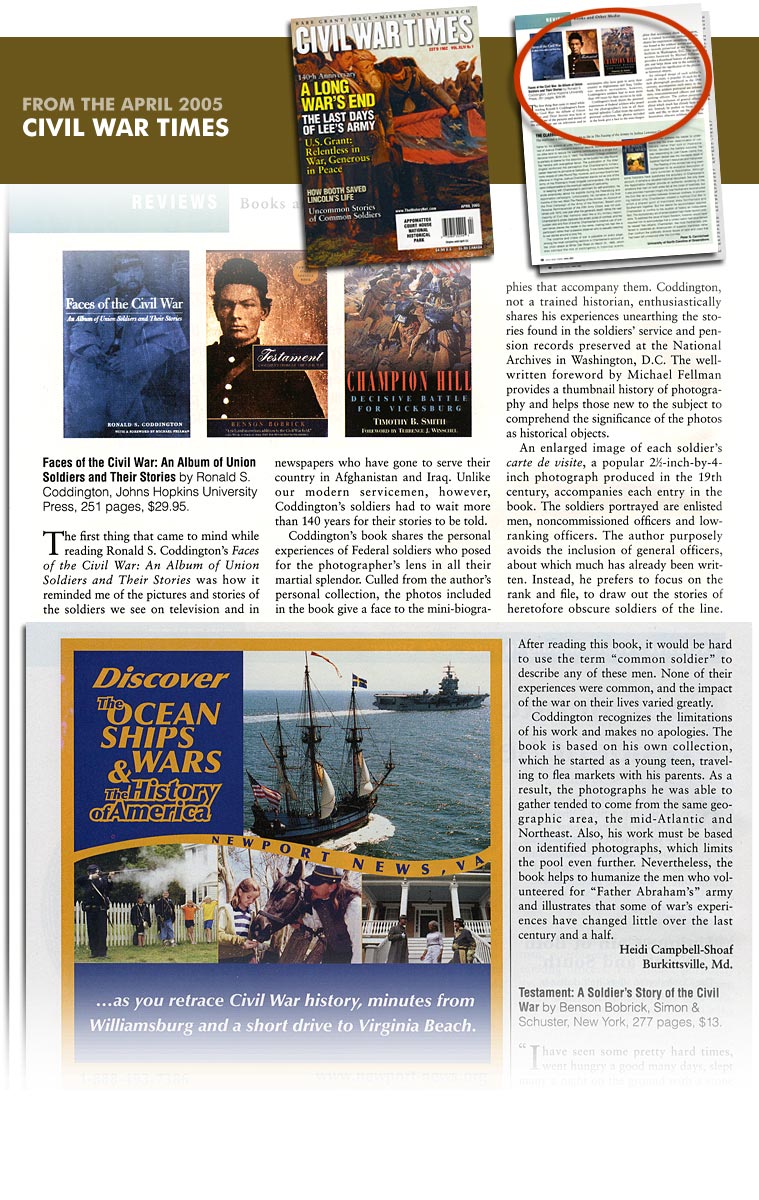
Faces of the Civil War: An Album of Union Soldiers and Their Stories by Ronald S. Coddington, Johns Hopkins University Press, 251 pages, $29.95
The first thing that came to mind while reading Ronald S. Coddington’s Faces of the Civil War: An Album of Union Soldiers was how it reminded me of the pictures and stories of the soldiers we see on television and in newspapers who have gone to serve their country in Afghanistan and Iraq. Unlike our modern servicemen, however, Coddington’s soldiers had to wait more than 140 years for their stories to be told.
Coddington’s book shares the personal experiences of Federal soldiers who posed for the photographer’s lens in all their martial splendor. Culled from the author’s personal collection, the photos included in the book give a face to the mini-biographies that accompany them. Coddington, not a trained historian, enthusiastically shares his experiences unearthing the stories found in the soldiers’ service and pension records preserved at the National Archives in Washington, D.C. The well-written foreword by Michael Fellman provides a thumbnail history of photography and helps those new to the subject to comprehend the significance of the photos as historical objects.
An enlarged image of each soldier’s carte de visite, a popular 2 ½ - inch – by – 4 – inch photograph, produced in the 19th century, accompanies each entry in the book. The soldiers portrayed are enlisted men, noncommissioned officers and low-ranking officers. The author purposely avoids the inclusion of general officers, about which much has already been written. Instead, he prefers to focus on the rank and file, to draw out the stories of heretofore obscure soldiers of the line.
After reading this book, it would be hard to use the term “common soldier” to describe any of these men. None of their experiences were common, and the impact of the war on their lives varied greatly.
Coddington recognizes the limitations of his work and makes no apologies. The book is based on his own collection, which he started as a young teen, traveling to flea markets with his parents. As a result, the photographs he was able to gather tended to come from the same geographic area, the mid-Atlantic and Northeast. Also, his work must be based on identified photographs, which limits the pool even further. Nevertheless, the book helps to humanize the men who volunteered for “Father Abraham’s” army and illustrates that some of war’s experiences have changed little over the last century and a half.
Heidi Campbell-Shoaf
Burkittsville, Md.